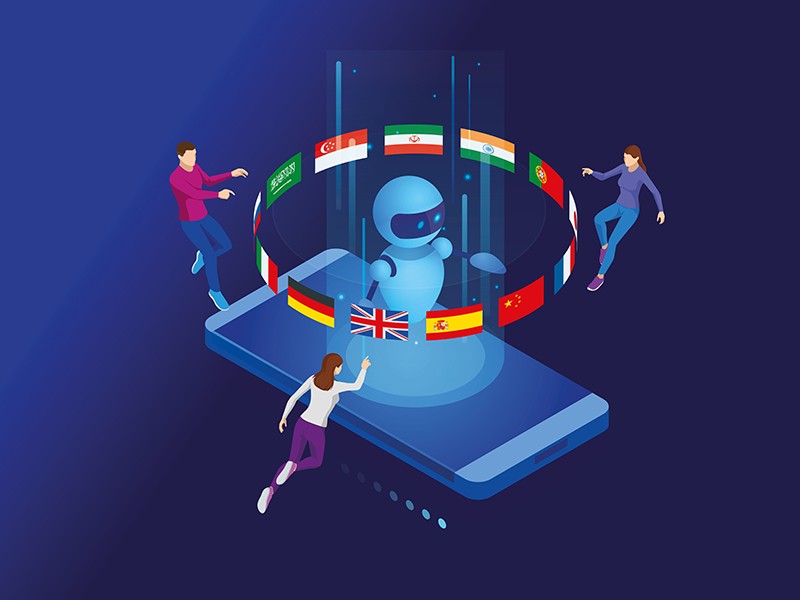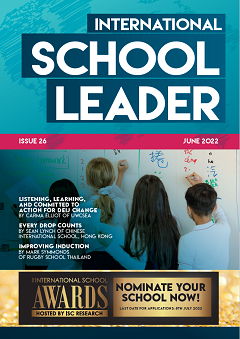
Recent trends indicate an increase in the number of incoming students to international schools with diverse linguistic and cultural backgrounds.
Within the UAE in particular, only 13% of the population is native. Within the country’s school system, 49% of students are Emirati, with the majority having Arabic as their first language, but data shows that, in 2023-2024, there were 162 nationalities represented at schools within the UAE.
More widely, in the GCC region, 52% of the population are non-nationals, while globally 40% of students face challenges in understanding course materials that are not in their mother tongue. These figures all highlight the increasingly diverse classrooms that schools are experiencing.
While this diversity enriches the learning environment, it also presents unique challenges, particularly for students who are learning in a language other than their mother tongue, for example English. EAL students (or English as an additional language students) account for a large proportion of the 6.9 million students who attend international schools worldwide.
With language barriers come struggles to understand instructions, challenges with grasping new vocabulary, and difficulties expressing themselves confidently in the dominant language of instruction. These difficulties can affect academic performance, engagement, and overall well-being.
Expressing knowledge
Historically, assistive technology has been a game changer for learners with additional learning needs, providing the adjustments needed to give these learners access to their course materials or the tests and exams that assess their progress.
But it has become increasingly clear that the use of technology can also provide innovative ways for multilingual learners to access and comprehend materials in their second (or third, or fourth, or fifth!) language. Furthermore, technology can provide innovative ways for these learners to express and communicate the knowledge they have gained during lessons.
Louise Dawson, a qualified teacher, SENco/Head of Inclusion and a respected inclusion professional based in Dubai, who works with schools, parents and students across the Middle East, spoke recently about the challenges faced in multilingual classrooms: “With any language barrier, the challenge is to overcome a lack of vocabulary and unfamiliarity with sounds and pronunciation. The variety of skills that are required to learn include listening, speaking, reading and writing; likely to be learned in that order. What we know is that when children struggle with vocabulary, sound and pronunciation, this creates a further effect on their expression or written work.”
“EAL learners will see unfamiliar letter formation, and spellings and hear unfamiliar sounds and words and can then struggle to express what they know. For example, if a child wants to describe the colour ‘magenta’, they may use the word ‘red’ because they are familiar with and can spell the word. However, if a child does know the word ‘magenta’ but doesn’t use it because of the fear of the spelling, this could lower their mark in a writing test, despite the fact that they knew the word. An additional barrier may be that English is also approached from left to right, whereas other languages are right to left.”

Source: ReadSpeaker
The role of text-to-speech technology
Text-to-speech is just one tool in the assistive tech arsenal. It takes written text and reads it aloud, helping students access and understand curriculum content. Additional tools, such as synchronous highlighting, translation, dictionary, and focus page masks can also support pupils as they tackle text in their lessons.
Just imagine sitting in a classroom where your teacher is speaking in a language you don’t speak at home – it’s hardly surprising that students can end up daydreaming or losing focus. Then imagine taking a test in a language you only speak at school. With ethical, AI-powered, lifelike voices from ReadSpeaker helping them to study, learners can re-engage with the curriculum and truly flourish when it comes to examinations.
Lily, a year 6 student from Stafford Grammar School in the UK, speaks Arabic at home with her family – but her lessons at school are all provided in English. She said: “At home, I speak Arabic so sometimes I use ReadSpeaker to help me, as it can read the English content in Arabic back to me.”
By hearing course content in both English and Arabic, Lily is able to improve her comprehension of English words and gain confidence in her own understanding of the materials.
“What we know is that when children struggle with vocabulary, sound and pronunciation, this creates a further effect on their expression or written work”
Louise Dawson
Reducing teacher workload
As a bonus for teachers navigating classrooms with many diverse students, text-to-speech can help to reduce their workload. How many teachers feel the burden of personalising content so all students are catered for? Providing a curriculum which is accessible, inclusive, equitable, and challenging for every learner can seem like an impossible task. But this is where text-to-speech comes into play, giving students the independence to choose how, when and on what device they consume their coursework.
“Varying levels of language proficiency and engagement can lead to a lack of confidence and feelings of exclusion,” added Dawson. “When we have children like this in the classroom this leads to increased teacher workload and introducing text-to-speech is one of the ways this workload can be reduced.”
Text-to-speech and other assistive technologies offer powerful solutions for supporting multilingual learners in international schools. By embracing these tools, schools can foster a more inclusive and equitable learning environment, empowering students to achieve their full potential. ReadSpeaker is the expert in text-to-speech for learning and provides a range of supportive tools which can empower multilingual learners to reach their full potential and shine in the classroom.
This is an advertorial from ReadSpeaker
By Emily Worthington

Emily Worthington is the Education Marketing Manager for EMEA at ReadSpeaker. You can connect with her on LinkedIn.

